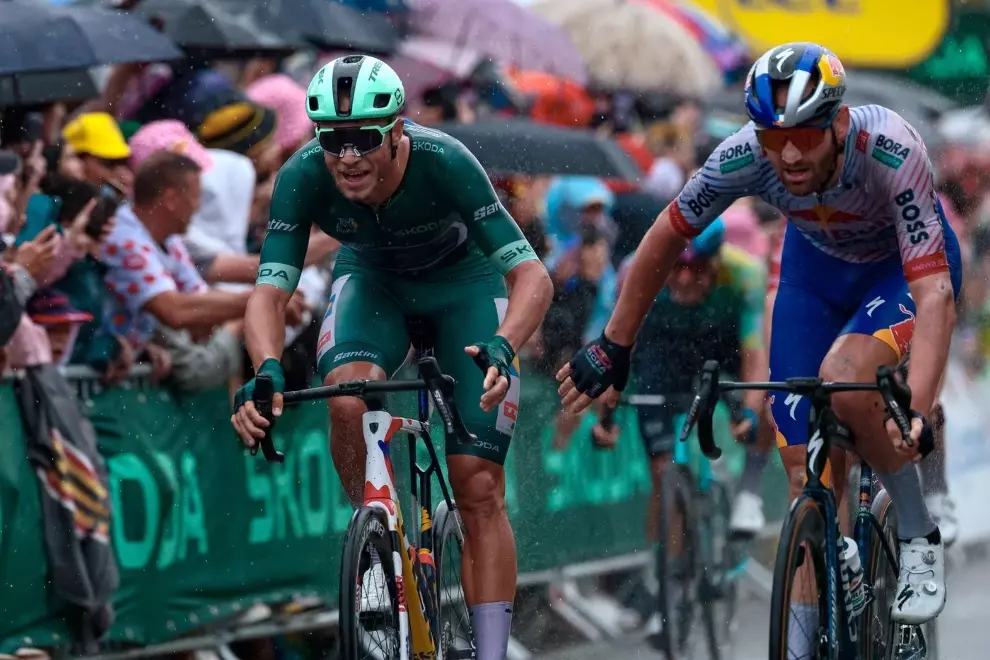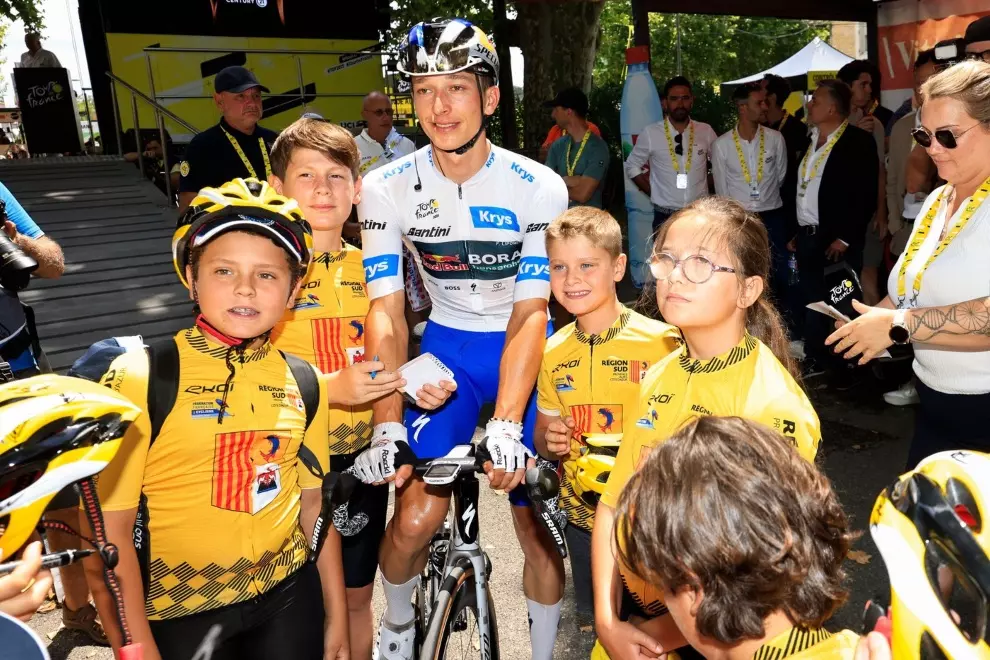What were cyclists eating when you first joined a professional team as a chef?
When I started back in 2011, there was a whole lot of pasta with ketchup and plain grilled chicken. It was honestly very dull and boring food. There was no attention to gut health or intake of healthy fats for the nerves and brain. There was a concept called the “sports buffet” where the different hotels would cook the exact same setup of a “buffet” everyday based on a very old school sports diet. This would consist of lettuce, tomato, canned corn, cucumber, canned tuna, olives, spaghetti Bolognese, tomato sauce, grilled chicken and fish, rice and some unidentified grilled veggies that nobody would eat. Eating the same every day is dull and a sure way to make the riders lose their appetite – and if they lose their appetite, they lose the race.
It’s completely different now, the meals are customized, delicious, varied and inviting, and the riders actually eat more than ever before, especially on the bike.
Why do you think cyclists were eating that way back then? Was it because of what the performance nutritionist prescribed? Did they enjoy that type of food?
Cycling is very tradition based, and a lot of the team managers were competing back when riders would starve themselves even in races. So, the food habits have been carried over from generation to generation along with crazy myths. For example, older riders and sports directors believed that food with flavour gives you a bad stomach. Also, there weren’t really performance nutritionists back in the day like there are now. So, a lot of the doctors would prescribe the diets and most sports doctors had very little education in food and nutrition and were mostly just focused on avoiding stomach issues.
The older riders were used to eating plain food over and over again, but the younger riders were struggling, so with the new generation of riders came change.
Why do you think that the approach to food and nutrition changed over the past years? Does it have to do with nutrition science progress? Or was it the no needle policy?
Both, honestly. And also looking at the wellbeing of the riders, thinking about their health long term. For me, the no needle policy meant that the chefs had to create much more nutrient dense meals and this was the start of what food looks like in the peloton today.
Note: The no needle policy was introduced in 2011 and it prohibited injections that have the aim of artificially improving performance or helping recovery. That meant riders could no longer inject vitamins, sugars, enzymes, amino acids or antioxidants straight into the blood stream.
What was your idea of cycling nutrition when you joined a cycling team? What kind of meals did you want to make?
I was ready to go all in with wholefoods and everything cooked from scratch. However, the riders were not all equally excited to join in that effort. It was a tough and rough start. But as time progressed and the younger riders and newcomers to the team started performing really well, the older riders started adapting a bit more.
Was it hard working with old school nutritionists? Did you get in fights over the menu?
Short answer is yes, at times. We had a lot of different nutritionists and experts connected to the team over the years and they all had different ideas of what was the right thing to do. For me, it was always the hardest to deal with the old school logic and studies that did not make sense to me. For example, measuring pasta by the volume and not by weight. Clearly, a cup of farfalle weighs less than a cup of spaghetti. This sort of extra work with no useful outcome was extremely frustrating to me. Luckily, this was only for a very short time that it was up for debate.
https://www.instagram.com/p/CuOR3FYI07M/
How did you manage to make the change towards more flavourful cooking at multi-stage races?
It was baby steps, getting to know what the riders liked and then gradually adding on 1 new ingredient with 2 ingredients they liked – expanding the “approved” foods list. It didn’t happen overnight, that’s for sure.
On the other hand, did you have any positive experiences with a nutritionist? Did you work with one whose input changed your approach to cooking for the team?
Yes, luckily, I did. See, the thing was, the riders had to trust me and I had to be able to explain why we served what we served. So, for me it was amazing to get a nutritionist connected to the team, that could help me debunk a lot of food myths and answer the questions that the riders had. This was science based on recent studies, that made it a lot easier for me to explain what was happening. I always took great pride in reading up on all the nutritional studies to understand why something would work and why something didn’t and it sure helped when I started having logical conversations with a properly educated person.
What are the advantages of the current approach to cycling nutrition over the old school pasta and rice approach?
Better and faster recovery, better digestion, more readily available energy during the races and happier and faster riders. That is a lot.
That really is a lot, nutrition made a huge difference. As we look forward, how do you see the relationship of a chef and a performance nutritionist continuing to evolve in races like the Tour de France?
This is where most teams will be able to make some serious changes in the future, if they understand the power of a proper chef and nutritionist team working together. Fine tuning the rider’s diets with attention to detail to keep them fuelled and at peak weight without starving them – this will be the next big thing where most is gained. Only a few teams take this part seriously to a degree where it really matters and makes a difference, Jumbo Visma being one of the teams ahead of the game.
But as long as the majority of the teams don’t prioritize funding for the chef and nutritionist team, this won’t happen. But if they do – WOW.
If you had to give 3 most important pieces of advice to amateur cyclists that want to mimic the pros? What would you tell them? How can they improve their diet?
- Ditch the alcohol. Alcohol is in no way good for your performance and especially if you are trying to lose weight, this is the first place to start.
- Prioritize a good recovery meal straight after racing. First, a protein shake and then you hit the carbs in the form of rice, sweet potatoes or potatoes. This way you will be ready for the next day of riding and you won’t be as sore.
- Bring enough food on the bike. Calculate how much energy you will burn during your ride and bring enough food to cover that, plus a bit extra in case your ride is longer than planned.




